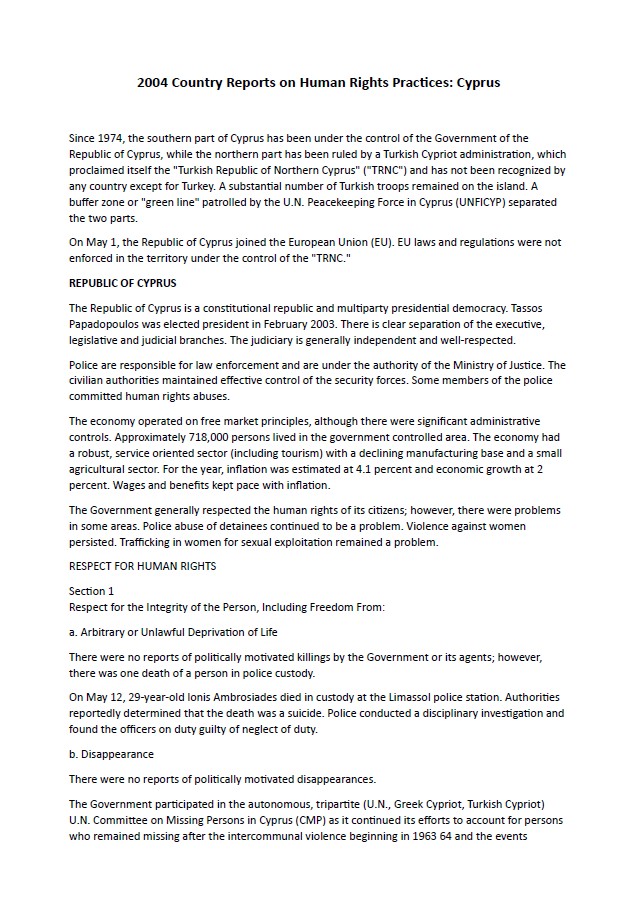Sepetinizde ürün bulunmuyor.
Ürün Kodu: CR0001387
| Yayın Adı | 2004 Country Reports on Human Rights Practices: Cyprus |
|---|---|
| Sağlama Türü | Açık Erişim |
| Yayınlayan | ABD Dışişleri Bakanlığı, Demokrasi, İnsan Hakları ve Çalışma Bürosu |
| Yayın Yeri | Washington, D.C. |
| Yayın Sıklığı | Yıllık |
| Dil | İngilizce |
| Sayfa Sayısı | 23 |
Özet / İçindekiler
Since 1974, the southern part of Cyprus has been under the control of the Government of the Republic of Cyprus, while the northern part has been ruled by a Turkish Cypriot administration, which proclaimed itself the “Turkish Republic of Northern Cyprus” (“TRNC”) and has not been recognized by any country except for Turkey. A substantial number of Turkish troops remained on the island. A buffer zone or “green line” patrolled by the U.N. Peacekeeping Force in Cyprus (UNFICYP) separated the two parts. On May 1, the Republic of Cyprus joined the European Union (EU). EU laws and regulations were not enforced in the territory under the control of the “TRNC.” The Republic of Cyprus is a constitutional republic and multiparty presidential democracy. Tassos Papadopoulos was elected president in February 2003. There is clear separation of the executive, legislative and judicial branches. The judiciary is generally independent and well-respected. Police are responsible for law enforcement and are under the authority of the Ministry of Justice. The civilian authorities maintained effective control of the security forces. Some members of the police committed human rights abuses. The economy operated on free market principles, although there were significant administrative controls. Approximately 718,000 persons lived in the government controlled area. The economy had a robust, service oriented sector (including tourism) with a declining manufacturing base and a small agricultural sector. For the year, inflation was estimated at 4.1 percent and economic growth at 2 percent. Wages and benefits kept pace with inflation. The Government generally respected the human rights of its citizens; however, there were problems in some areas. Police abuse of detainees continued to be a problem. Violence against women persisted. Trafficking in women for sexual exploitation remained a problem.







Henüz yorum eklenmedi.